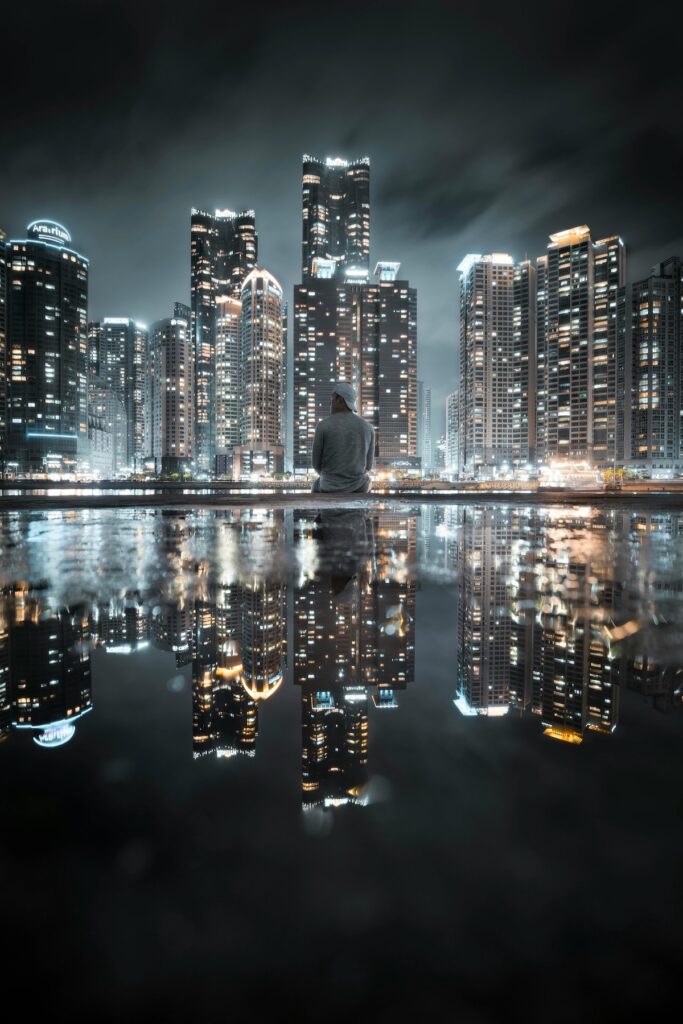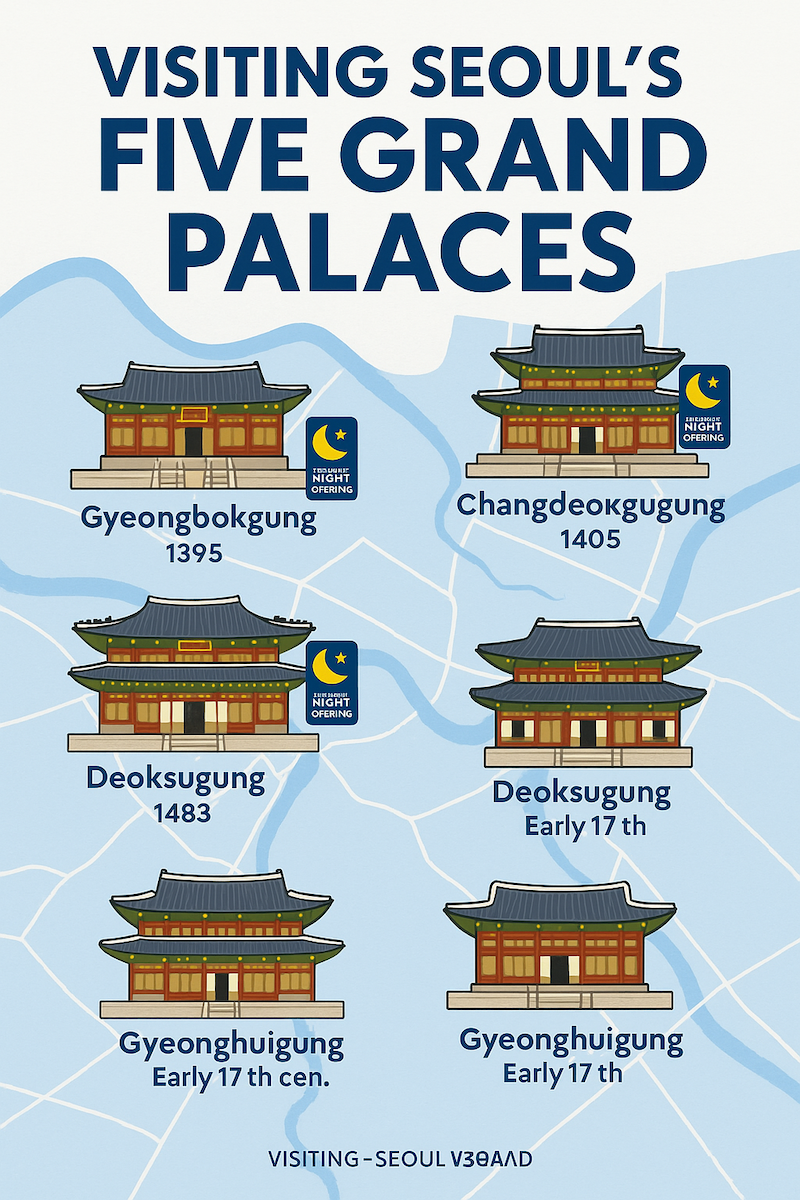If you’ve ever wondered just how cold Korea gets in winter, the answer is simple: cold enough to sting your cheeks, but beautiful enough to make you forget it.
Korea’s winter is more than a weather forecast — it’s a season full of rituals, sights, flavors, and quiet magic.
From the first snow over Seoul’s palaces to steaming street food under twinkling lights, here’s everything you need to know (and feel) about experiencing the Korean winter like a local.
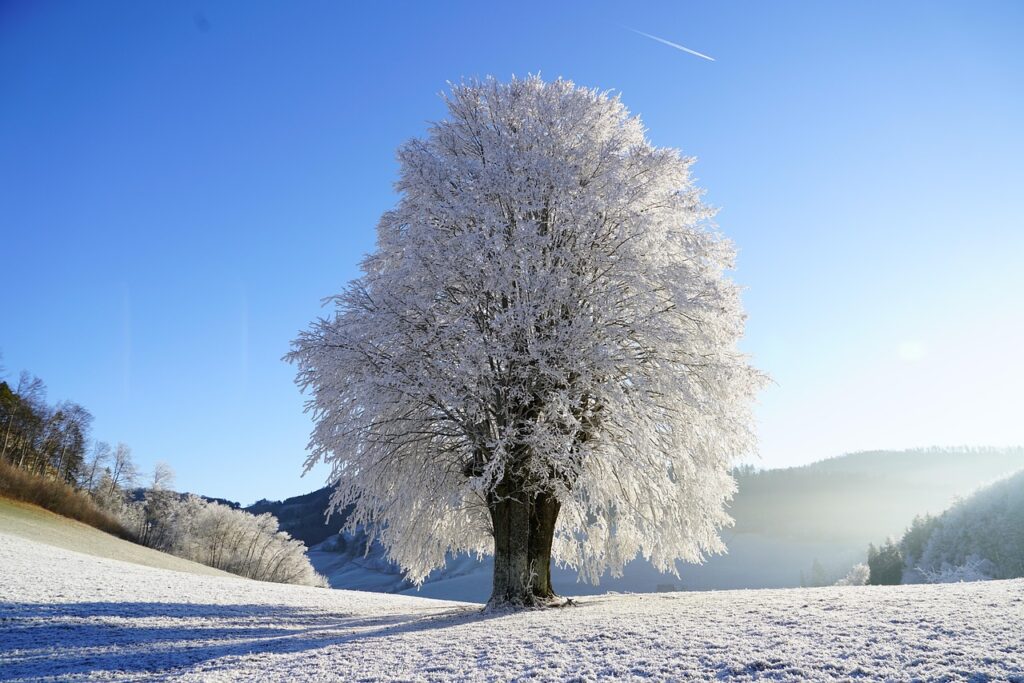
1 | When Winter Starts and How It Feels
Korea’s winter usually runs from December to February, but chilly winds often begin in late November and linger until early March.
| Region | Average Temp | Notable Features |
|---|---|---|
| Seoul & Incheon | –5°C to 5°C | Dry air, occasional snow |
| Gangwon Province | –10°C to 0°C | Ski resorts, heavy snow |
| Busan & Jeju | 0°C to 8°C | Mild but windy coastal cold |
It’s not just the temperature — it’s the windchill.
The cold air sweeps down from Siberia, making Korean winter crisp, dry, and biting.
Yet that same crispness is what makes the sky so blue, the sunsets so sharp, and the night lights so clear.
2 | The First Snow: A Moment Koreans Celebrate
Ask any Korean — the first snowfall isn’t just weather; it’s a little ceremony.
Couples wish to see the first snow together (a sign of luck in love).
Kids rush outside to make snowballs before it melts.
Cafés turn on soft jazz, and suddenly, everyone looks up from their phones to the sky.
If you visit between late November and mid-December, you might catch this moment — fleeting but heartwarming — when the entire city seems to pause.
3 | How Cold Is Too Cold? Understanding Korean Winter Temperatures
There are two types of cold in Korea:
- Dry Cold: clear sky, biting wind, sharp but tolerable (common in Seoul).
- Wet Cold: cloudy and damp, found in coastal cities like Busan or Mokpo.
In Seoul, you can feel your face tighten in seconds when the wind blows.
At –10°C, your breath fogs instantly, and even your phone battery might give up early.
But don’t worry — every corner café feels like a warm hug once you step inside.
4 | What Locals Do to Survive the Chill
Koreans don’t hibernate; they adapt with style and smart habits.
- Hot Packs (핫팩): Disposable hand warmers — you’ll find them in every convenience store.
- Ondol Heating: Every home, hotel, and even restaurant has heated floors.
- Winter Cafés: Cozy interiors, steamed milk drinks, and misty windows — perfect for hours of warmth.
- Indoor Lifestyle: Underground malls, subway connections, and endless cafés mean you rarely stay outdoors for long.
Try this: visit Starfield COEX Mall in Gangnam or Lotte World Mall in Jamsil — you can walk for hours without facing the cold wind.
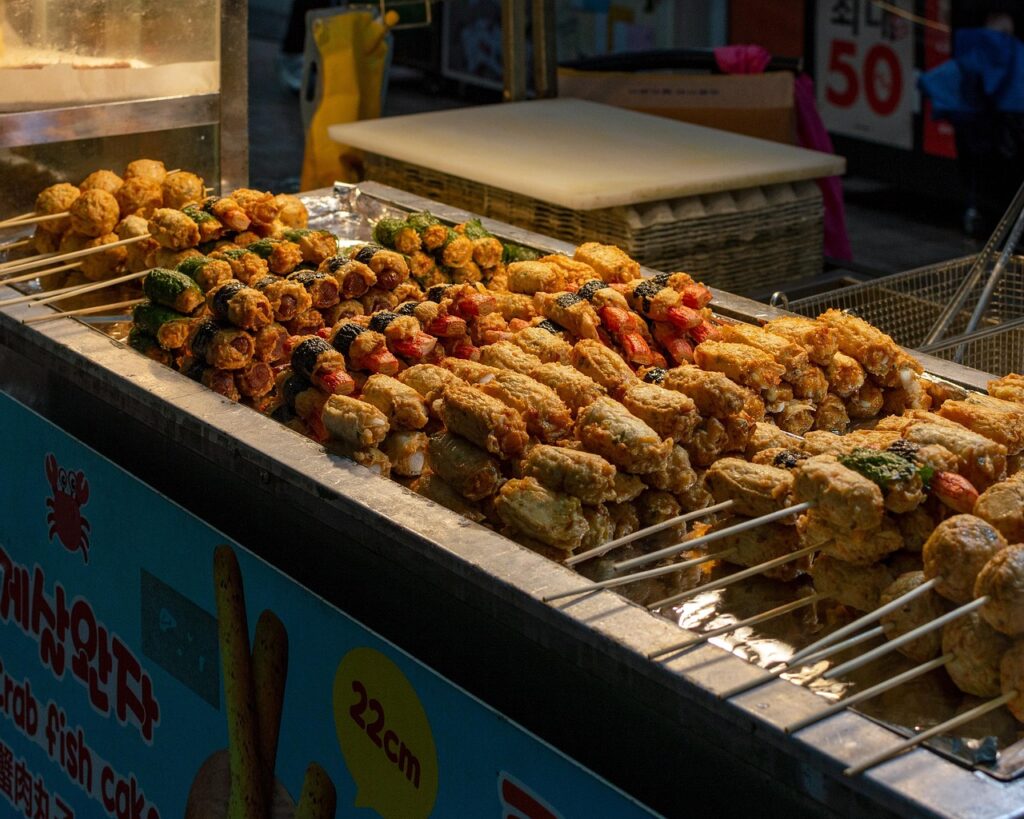
5 | Korean Winter Foods That Warm the Soul
Winter food is one of Korea’s greatest joys. When the air outside is freezing, every bite feels twice as comforting.
🍲 ① Street Food
- Hot tteokbokki (spicy rice cakes)
- Bungeoppang (fish-shaped pastry filled with red bean or cream)
- Hotteok (sweet syrup-filled pancake)
- Roasted sweet potato (군고구마) sold from smoky street carts
The smell alone is enough to stop you mid-walk.
🍜 ② Restaurant Comfort Foods
- Sundubu-jjigae (soft tofu stew) — silky and spicy
- Kimchi-jjigae (kimchi stew) — the unofficial dish of Korean winter
- Galbitang or Samgyetang — hot soups that balance rich and clean flavors
- Odeng (fish cake skewers) — sold at stalls in broth-filled steam
Each dish has the same purpose: to push the cold out of your bones.
6 | The Sound of Winter: Streets and Silence
Korean winters are surprisingly quiet.
Snow absorbs sound, and when the flakes fall at night, the city softens.
In the early morning, you’ll hear just:
- The crunch of boots on snow
- Distant buses humming through cold air
- Vendors shouting “호떡 있어요!” (Hotteok is ready!)
It’s peaceful, almost cinematic — especially if you walk around Bukchon Hanok Village or Changdeokgung Palace after snowfall.
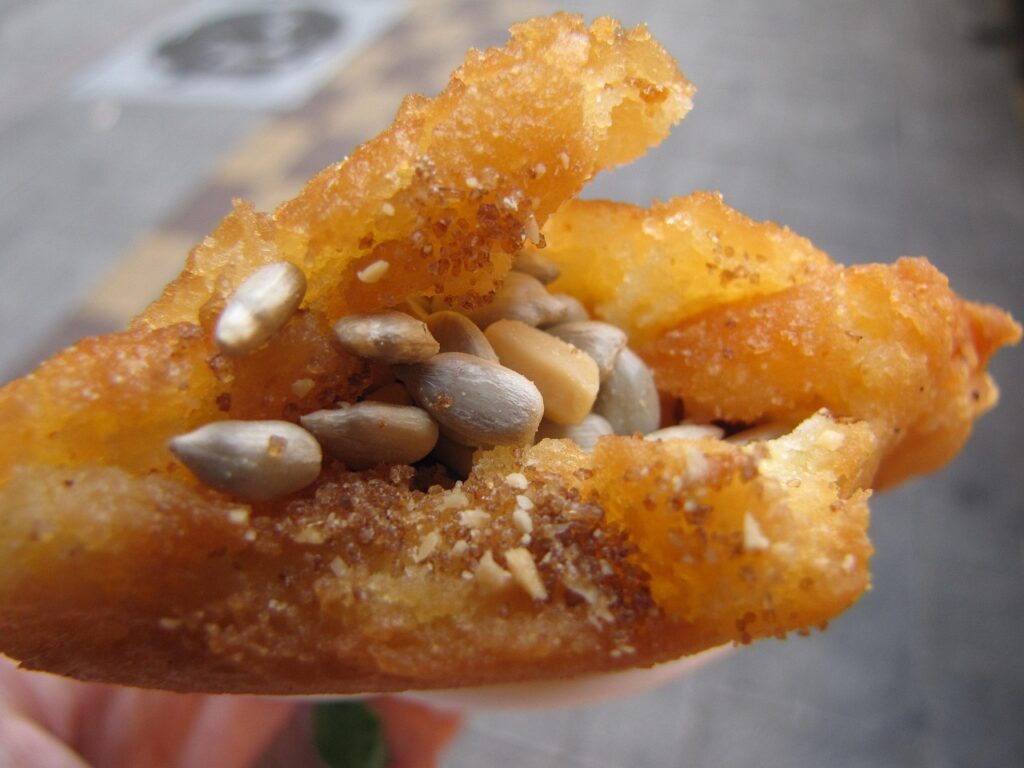
7 | Korean Winter Festivals and Experiences
| Experience | Where | When |
|---|---|---|
| Hwacheon Sancheoneo Ice Festival | Gangwon-do | January |
| Taebaeksan Snow Festival | Taebaek | Jan–Feb |
| Lighting Festival | Garden of Morning Calm | Nov–Feb |
| Skiing & Snowboarding | Vivaldi, Alpensia, Yongpyong | Dec–Mar |
| Seoul Plaza Ice Rink | City Hall | Mid-Dec–Feb |
Even if you don’t ski, visiting a resort for the snow view is worth it — warm cafés, music, and bonfires make the atmosphere special.
8 | Daily Life in the Cold: Korean Habits You’ll Notice
- Layering Culture: Locals wear long padding jackets (롱패딩) that reach the knees.
- Coffee Shops as Shelters: No one rushes — cafés are gathering places to warm up.
- Winter Cosmetics: People use heavy moisturizers, hand cream, and lip balm constantly.
- Public Heating Etiquette: Subways, buses, and shops are heated — remove your coat when entering.
Koreans are masters of temperature transitions — always ready to move from freezing outdoors to heated indoors in seconds.
9 | Nature in Winter: From Snow Mountains to Frozen Seas
- Seoraksan National Park: Snow-capped peaks and frozen waterfalls.
- Nami Island: Fairytale-like with frost on every branch.
- Han River: Quiet, glassy, breathtaking at sunset.
- East Coast (Gangneung/Sokcho): Snow on sand — rare and surreal.
Winter reveals a calmer, quieter side of Korea — fewer crowds, clearer air, deeper beauty.
10 | Korean Words You’ll Hear Everywhere in Winter
| Word | Meaning |
|---|---|
| 추워요 (Chuwoyo) | It’s cold! |
| 따뜻해요 (Ttatteuthaeyo) | It’s warm. |
| 핫팩 (Hatpaek) | Hot pack |
| 롱패딩 (Longpaeding) | Long padded coat |
| 눈 (Nun) | Snow |
| 첫눈 (Cheonnun) | First snow |
Try saying “추워요!” with a smile — locals will instantly relate.
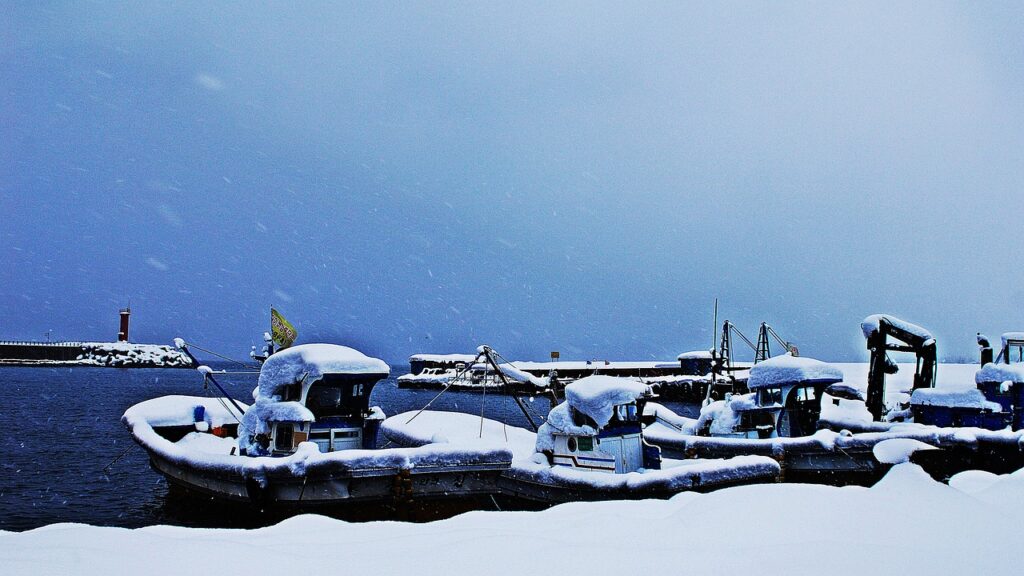
11 | Indoor Escapes Worth Visiting
If the cold gets too much, head indoors where warmth meets culture:
- Museums: National Museum of Korea, Leeum, or D Museum
- Traditional Tea Houses: Bukchon, Insadong
- Book Cafés: Anthracite, Café Layer57, or The Book Society
- Jjimjilbang (Korean Sauna): Soothe your body with heated stone floors and herbal baths
Many foreigners say their first jjimjilbang visit changed how they viewed winter — it’s both healing and cultural.
12 | The Romantic Side of Korean Winter
Korean winter has a way of slowing time.
Couples walk hand in hand through softly falling snow.
Friends share hot fish-shaped bread by the roadside.
Families gather around steaming pots of stew.
It’s no surprise many K-dramas film their most emotional scenes in winter — snow equals nostalgia in Korea.
For visitors, this charm lingers long after you leave — you remember the sound of your boots in the snow, the smell of roasted chestnuts, and the way the city lights sparkle against the cold.
13 | Why the Cold Is Worth It
Korea’s winter isn’t gentle — but that’s what makes it memorable.
It challenges you, then rewards you with beauty:
- Clearer skies
- Cozy interiors
- Comfort food
- Human warmth
You don’t just see winter in Korea — you feel it in every breath, step, and cup of hot tea.
14 | Winter Travel Tips (For Comfort and Safety)
✅ Check daily weather on KMA (Korea Meteorological Administration)
✅ Wear layers instead of one thick coat
✅ Use non-slip shoes (roads get icy)
✅ Always carry a hot pack
✅ Drink more water — the air is dry
✅ Don’t underestimate windchill — even 0°C feels colder than it sounds
15 | Final Thoughts
When you visit Korea in winter, you’re not just chasing snow — you’re witnessing a culture that embraces the cold.
You’ll learn that warmth doesn’t only come from heaters or coats — it comes from shared food, glowing lights, and quiet moments of stillness.
The cold in Korea doesn’t push you away; it invites you in.
And when you finally return home, you might just miss that crisp, silent air and the taste of hot tteokbokki under the first snow.
